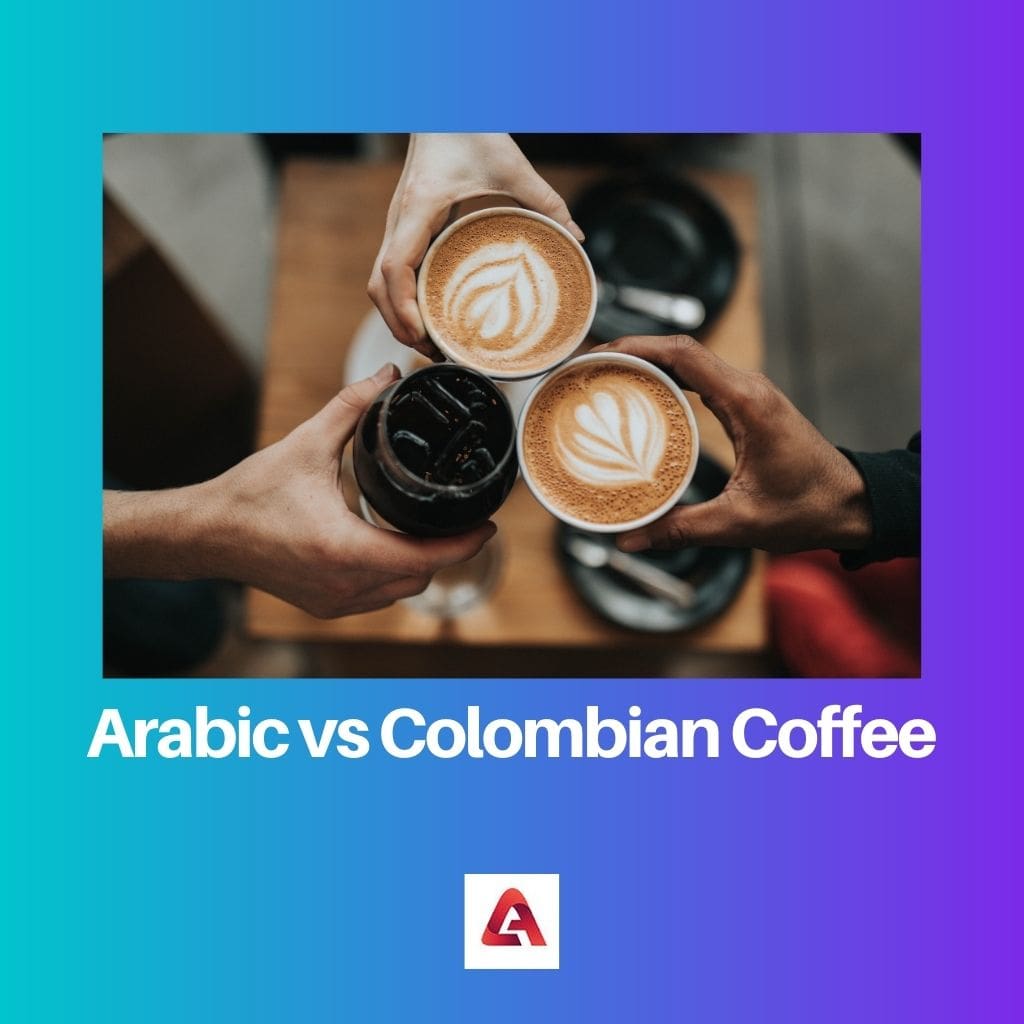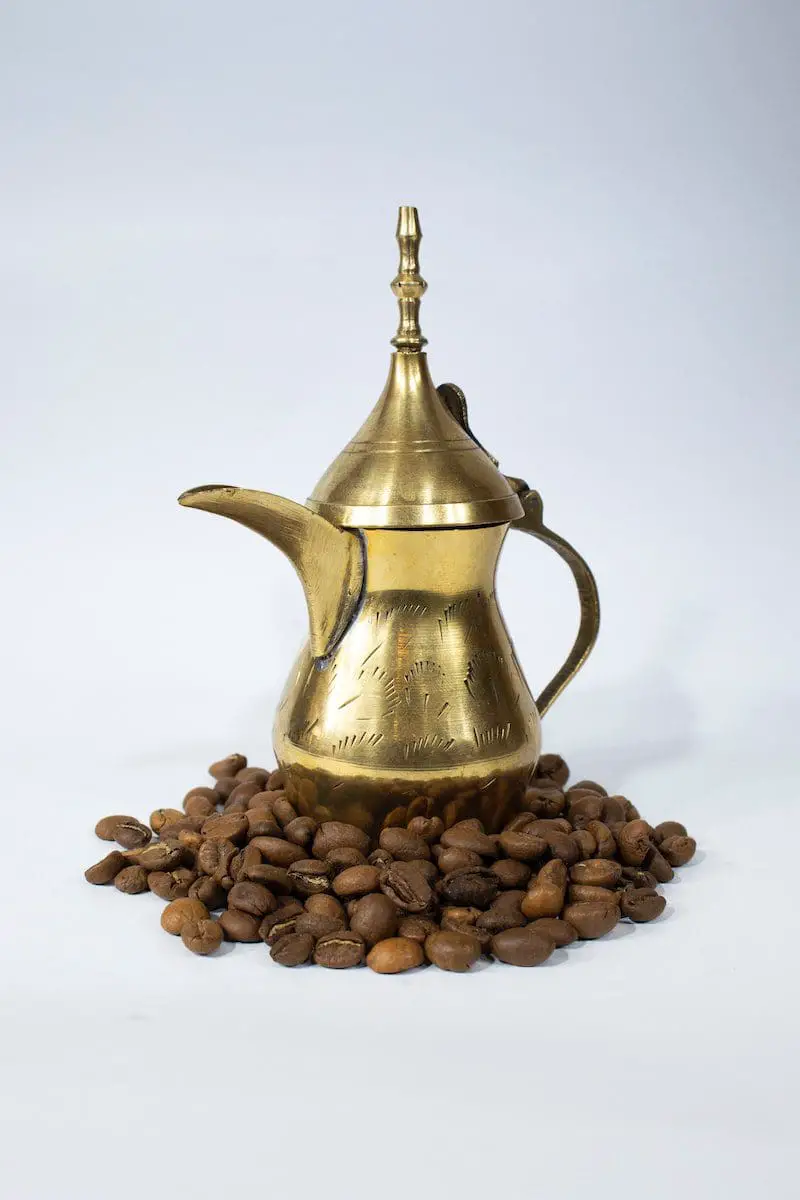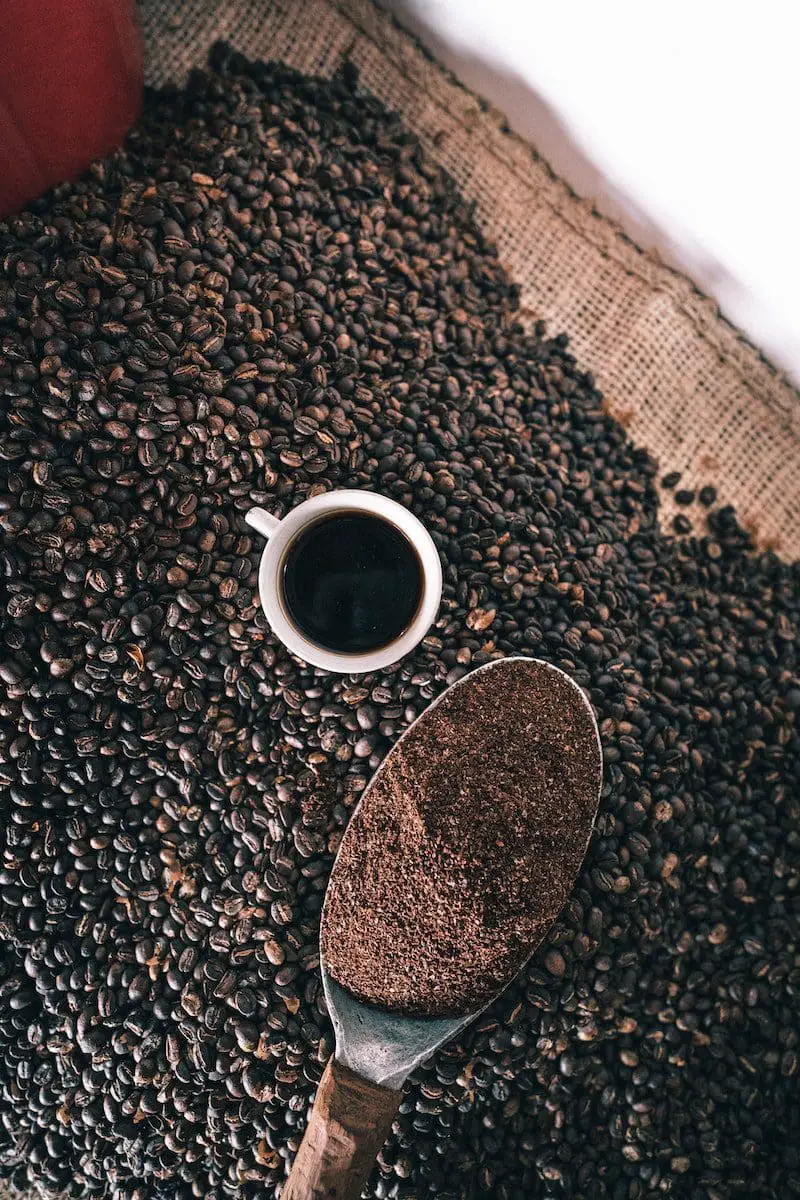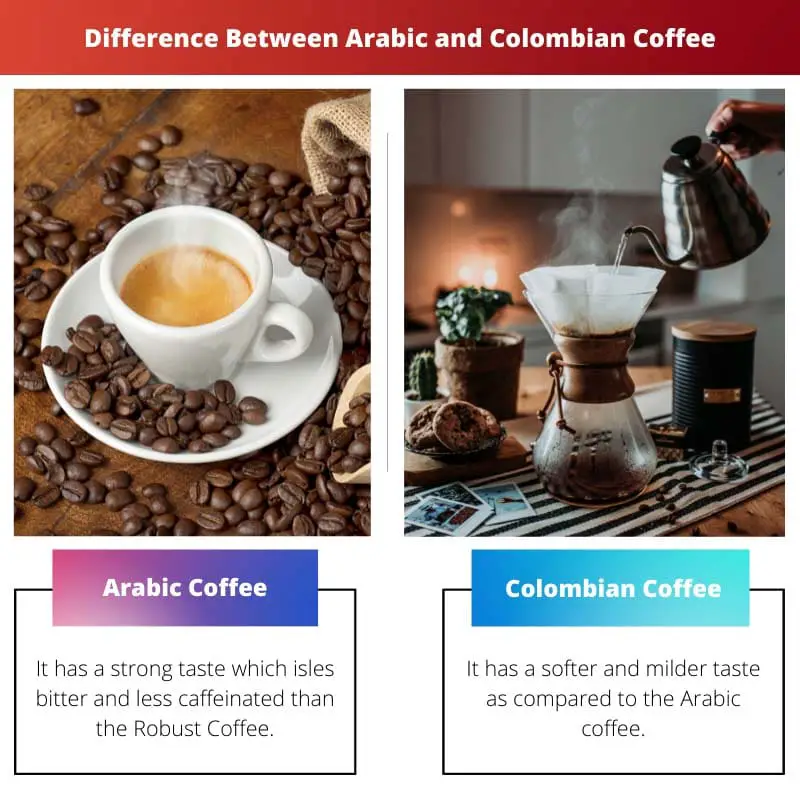In its onward furtherance, society has given rise to a potent brewed beverage, coffee, which has a remarkable duende that attracts millions of people of all ages universally. It occupies a far more compelling position than any other beverage.
Some say it secures the second position after oil in today’s list of most valuable commodities. It exceeds many subsidiary foods in terms of palatability owing to its rich flavor and aroma.
Key Takeaways
- Arabic coffee is a brewing method that uses lightly roasted Arabica beans, cardamom, and sometimes saffron, producing a unique, strong flavor.
- Colombian coffee is known for its high-quality Arabica beans, which offer a balanced flavor profile with mild acidity, medium body, and fruity or nutty notes.
- While Arabic and Colombian coffee utilize Arabica beans, their brewing methods, flavor profiles, and additional ingredients differ.
Arabic vs. Colombian Coffee
Arabic coffee is a traditional drink made from grilled coffee beans and brewed in a specific way served with dates or other sweets and is a hallmark in Arab culture. Colombian coffee mild- flavored coffee grown in Colombia with healthy acidity. It is a very popular coffee and is exported to many countries.

Coffea Arabica and Coffea Canephora (Robusta Coffee) are the two major crash crops from which coffee beans are derived. Coffea Arabica, or Arabic coffee, is considered the very first coffee species cultivated and has its origin in Yemen.
It constitutes the major portion of the global coffee production. Colombian coffee is made from 100% Arabica beans, which are grown in the farms of Colombia.
Due to the difference in regions of production of the two varieties of coffee crops and considering the changing soil and climate, Arabic and Colombian coffee differ concerning their strength, taste, and preparation process.
Comparison Table
| Parameter of Comparison | Arabic Coffee | Colombian Coffee |
|---|---|---|
| Origin | Arabian coffee has originated from Arab countries like Yemen, where it was first cultivated, Egypt, and Syria. | Colombian coffee is completely made from Arabic coffee beans, which are grown on farms in Colombia. |
| Taste | It has a strong taste; the isles are bitter and less caffeinated than Robust Coffee. | It has a softer and milder taste as compared to the Arabic coffee |
| Processing | The coffee beans extracted from dried cherries are directly roasted without washing. | The pulp from coffee beans, extracted from dried cherries, is washed off for 2-3 days via a very skillful process before the beans are roasted. |
| Preparation | It needs to be brewed before consumption. | It is more of an ‘instant coffee’ and may or may not be brewed before consumption. |
| Service | It is served in small decorative cups called ‘finjāns’ up to a few centiliters. It may also be poured into a larger kettle called ‘Della.’ | There is no traditional or specific way of serving Colombian coffee |
| Side snacks | Dates, dried fruits, or candied nuts are served along with this coffee by the traditional Arabic culture. | No specific complimentary snacks are served, and it completely depends on the consumer’s taste. |
What is Arabic Coffee?
Arabic coffee, also known as Coffea Arabica, is more acidic, less bitter, and less caffeinated than Robusta coffee. It is the native crop of Arab countries, including Yemen, where it was first cultivated, Egypt, and Syria.
These crash crops are 9-12 m tall, bear white flowers, grow in axillary clusters, and have an open-branching system. Planted at a 1000-1500 m height from the mean sea level, these crops require 1600-2500 mm of annual rainfall and a suitable temperature range of 15-25°C.
The crops require mildly acidic, deep, friable, moisture-retentive soil rich in organic matter. After drying the cherries, the beans are removed and directly roasted, and the beans are not washed.
Arabic coffee is served boiled in small cups with decorative patterns known as ‘finjāns,’ a few centiliters at a time. It is prepared from beans that are light to heavily roasted and ground and has a dash of cardamom for additional flavor.
It is traditionally black, unfiltered, and sugar-free and needs to be brewed before consumption. While serving, it is complemented with dates and dried fruits.

What is Colombian Coffee?
Colombian coffee is globally acknowledged for its superior grade and rich taste. It is grown exclusively in Colombia and completely based on Arabic coffee beans.
It may or may not be brewed and can be prepared instantly. The crash crops here receive a desirable amount of approximately 2000 mm of rainfall annually and optimum temperature, humidity, pH and quality of soil, elevation, and other necessary climatic conditions, which makes it one of the best in the world.
Colombian coffee is considered to have the uppermost crust concerning its processing method, which excels that of traditional Arabic coffee. After removal of the beans from the dried cherries, they are washed, making them taste softer and milder.
This involves a highly skilled procedure where the pulp is washed off the beans over a few days or more. Unlike traditional Arabic coffee, there isn’t any specific way of serving Colombian coffee.
Cups of various sizes and designs can be used, and several options for side dishes/ snacks to be served to complete the treat.

Main Differences Between Arabic and Colombian Coffee
- Arabic coffee was first cultivated in Yemen and originated in Arab countries like Egypt, Syria, and Yemen. In contrast, Colombian coffee is made from 100% Arabic coffee beans from crops planted in Colombia.
- Arabic coffee is primarily strong in taste, but Colombian coffee, in comparison to this, has a milder taste due to the difference in the two processing.
- During the processing of Arabic coffee, beans are not washed and are directly roasted. On the other hand, in the case of Colombian coffee, beans are washed off their pulp before roasting.
- Arabic coffee is mandatorily brewed before consumption, while Colombian coffee is instantly prepared and may not be brewed.
- Arabic coffee is served boiled in a very small amount in tiny decorated cups, whereas no such specific serving method is adopted in Colombian coffee.
- Dates, dried fruits, and candied nuts are traditionally served with Arabic coffee. Still, the idea of complimentary snacks lies at the consumer’s discretion in the case of Colombian coffee.

While the article provides valuable insights into the unique flavors of Colombian coffee, it’s good to see an in-depth comparison with Arabic coffee. It helps in understanding the characteristics of both types better.
I couldn’t agree more, Edwards Joel. The detailed comparison table is particularly helpful in understanding the distinctions between Arabic and Colombian coffee.
I absolutely love how the article vividly describes the different types of coffee and their characteristics. It’s great to learn about the origins and unique flavors of both Arabic and Colombian coffee.
I completely agree, Lucy93. The thorough comparison of the two types of coffee is very informative and helps us understand the differences better.
The thorough explanation of the geographic origins and climatic requirements for growing Arabic and Colombian coffee is truly enlightening. It provides a well-rounded understanding of these beverages.
I couldn’t agree more, Cthompson. The article is quite compelling in offering a comprehensive view of the distinctive characteristics of these types of coffee.
I find the article’s descriptions of the origin and preparation of Arabic coffee to be fascinating. The traditional way of serving in small cups called ‘finjāns’ brings a whole cultural aspect to the coffee drinking experience.
Absolutely, Chapman Sophie. It’s interesting to learn about the cultural significance associated with Arabic coffee. The article provides a comprehensive view of the world of coffee.
The informative details about the preparation and serving methods of Arabic and Colombian coffee are truly eye-opening. It gives an insight into the cultural significance associated with these beverages.
Indeed, Moore Lily. The article not only addresses the flavor profiles but also delves into the cultural aspects of both types of coffee.
I couldn’t agree more, Moore Lily. The emphasis on the cultural elements adds depth to the understanding of Arabic and Colombian coffee.
The article has a well-structured comparison of Arabic and Colombian coffee, which makes it easier to comprehend the differences between the two. Kudos to the detailed presentation.
Absolutely, Alexander11. The comparison table is a great addition, providing a clear picture of the distinct attributes of each type of coffee.
I couldn’t agree more, Alexander11. The article is quite comprehensive in its analysis of the differences between Arabic and Colombian coffee.
The comprehensive descriptions and comparisons of Arabic and Colombian coffee are truly captivating. It’s an enjoyable and educational read for individuals seeking in-depth knowledge about coffee.
I completely agree, Rcook. The article is both informative and intriguing for anyone with a keen interest in the world of coffee.
Absolutely, Rcook. The article makes for an engaging read and caters to the intellectual curiosity of coffee connoisseurs.
The article does an excellent job in highlighting the unique flavors and characteristics of both Arabic and Colombian coffee. It’s an educational read for all coffee enthusiasts.
Absolutely, Parker Yvette. The article provides an insightful view of the differences between these two types of coffee and their cultural significance.
I concur with your viewpoint, Parker Yvette. The article is an enriching resource for coffee lovers.
This article has provided me with a deep understanding of the differences in taste and preparation methods of Arabic and Colombian coffee. The distinctive characteristics of both are well-explained.
I share your thoughts, Justine Evans. The article is certainly enlightening in understanding the nuances of these two types of coffee.
I find the detailed information about the origin and cultivation of Arabic and Colombian coffee quite enlightening. It’s great to learn about the specific conditions required for growing these coffee plants.
I agree, Trogers. The article provides a comprehensive overview of the geographical and environmental factors influencing the production of these coffees.